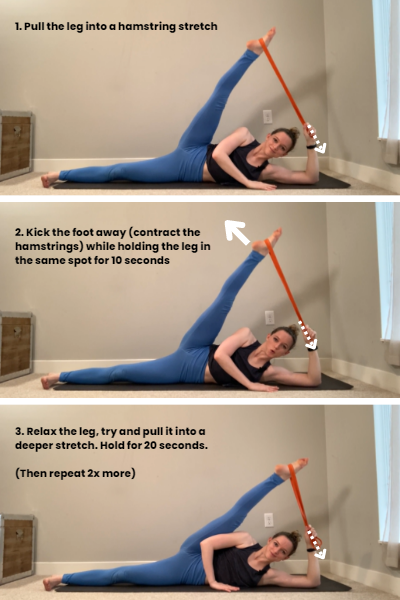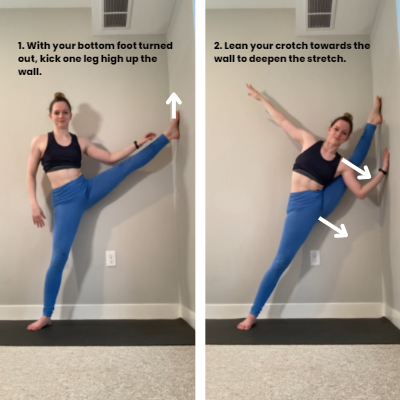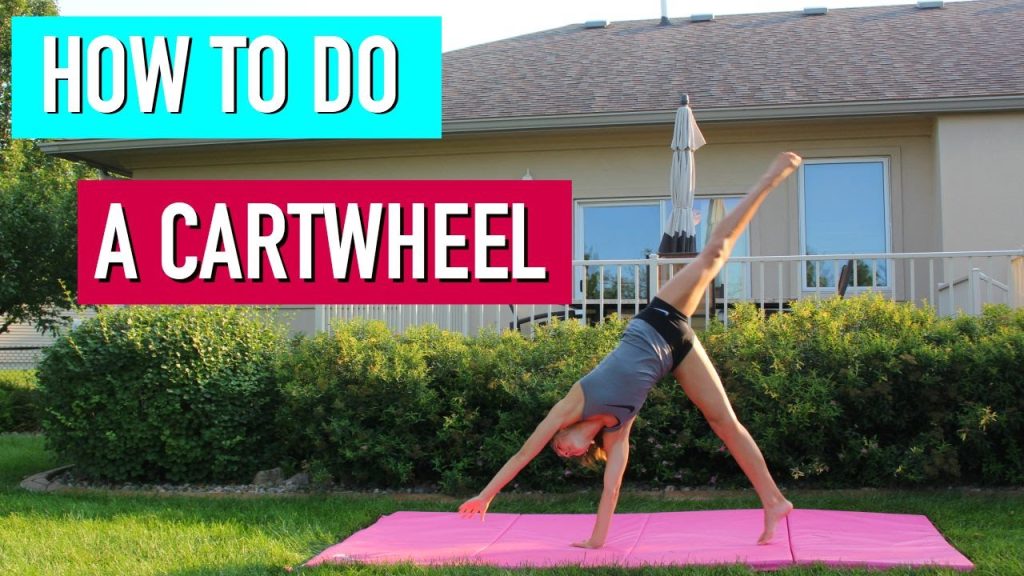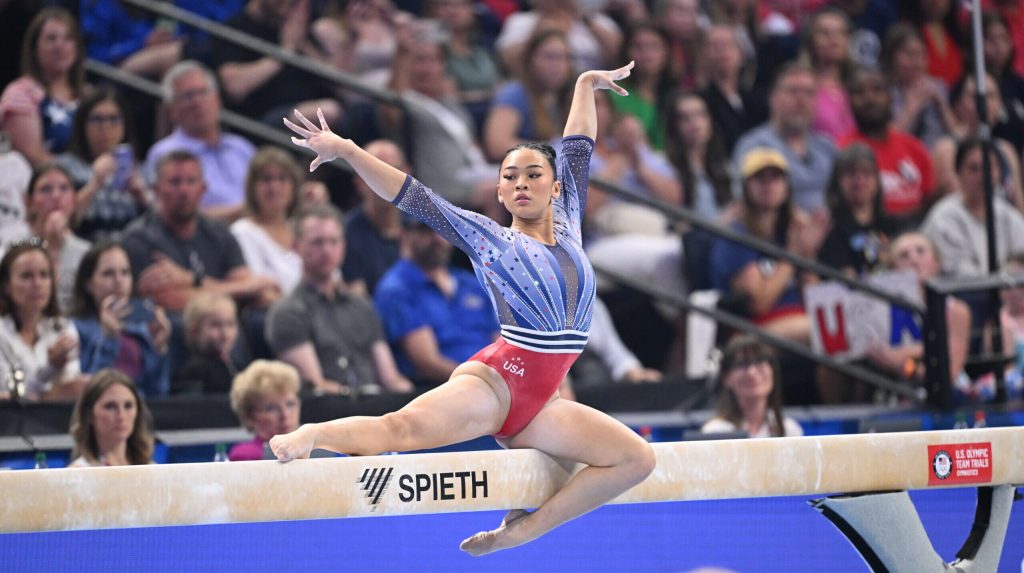Want to kick higher in gymnastics? You can improve your flexibility and strength.
Kicking higher is a goal for many gymnasts. It helps in routines and improves performance. Holding a higher kick requires practice, dedication, and the right techniques. This guide will show you how to increase your kick height. We will explore exercises and tips to help you reach this goal.
With consistent effort, you can achieve impressive results. Ready to elevate your gymnastics skills? Let’s get started!
Introduction To High Kicks In Gymnastics
High kicks in gymnastics are essential for showcasing flexibility and strength. These movements demonstrate a gymnast’s control and precision. High kicks can significantly enhance a performance’s visual appeal. Understanding how to perform and improve high kicks is crucial for gymnasts at any level.
Importance Of High Kicks
High kicks are fundamental in many gymnastics routines. They highlight a gymnast’s flexibility and leg strength. Judges often score routines higher when they include well-executed high kicks. These kicks also help improve overall body balance and coordination. Practicing high kicks can lead to better performance in other skills.
Common Challenges
Many gymnasts struggle with achieving higher kicks. One common challenge is limited flexibility. Tight muscles can restrict the range of motion. Another challenge is maintaining balance during the kick. Core strength plays a vital role here. Fear of injury is also a concern for many. Proper warm-up and stretching can reduce this risk.
Warm-up Techniques
Warm-up techniques are crucial for gymnasts aiming to hold a higher kick. Properly warming up helps increase flexibility, reduce injury risk, and improve performance. Let’s look at some effective warm-up techniques.
Dynamic Stretching
Dynamic stretching involves moving parts of your body and gradually increasing reach and speed. This type of stretching helps loosen muscles and improve range of motion. Leg swings are a great example. Stand on one leg, swing the other leg forward and backward. Repeat 10 times on each leg.
Another dynamic stretch is hip circles. Stand with feet hip-width apart. Place hands on hips and make big circles with your hips. Do 10 circles in each direction. These movements will help prepare your muscles for higher kicks.
Joint Mobilization
Joint mobilization exercises target the joints, making them more flexible and ready for action. One effective exercise is ankle circles. Sit on the floor, extend one leg, and make circles with your ankle. Do 10 circles in each direction. Repeat with the other ankle.
Wrist circles are also important. Extend your arms in front of you and make small circles with your wrists. Do 10 circles in each direction. These exercises help ensure that your joints are ready for the demands of gymnastics.
Strength Training
Strength training is crucial for achieving higher kicks in gymnastics. It helps build muscle power and endurance. This section will focus on core and leg exercises. These exercises will boost your strength and flexibility.
Core Exercises
A strong core is essential for high kicks. It provides stability and balance. Here are some effective core exercises:
- Planks: Hold a plank position for 30 seconds to 1 minute.
- Russian Twists: Sit on the floor, lean back slightly, and twist your torso side to side.
- Bicycle Crunches: Lie on your back and pedal your legs as if riding a bike while touching your elbows to opposite knees.
- Leg Raises: Lie on your back, lift your legs to 90 degrees, and lower them slowly without touching the floor.
Leg Strengthening
Strong legs are vital for higher kicks. They provide the necessary power and support. Include these leg strengthening exercises in your routine:
- Squats: Stand with feet shoulder-width apart, lower your body as if sitting in a chair, and return to standing.
- Lunges: Step forward with one leg, lower your hips until both knees are bent at 90 degrees, and push back to the starting position.
- Calf Raises: Stand on the balls of your feet and raise your heels as high as possible, then lower them slowly.
- Leg Press: Use a leg press machine to push weight away from your body using your legs.

Credit: www.daniwinksflexibility.com
Flexibility Exercises
Flexibility exercises play a vital role in improving your kick height in gymnastics. Stretching your muscles regularly helps in increasing your range of motion and reducing the risk of injury. Flexibility is essential for achieving those high kicks, which are a key part of many gymnastics routines. Let’s dive into some effective exercises to enhance your flexibility.
Hamstring Stretches
Hamstring stretches are crucial for high kicks. Tight hamstrings can limit your leg’s upward movement. Start with a simple standing hamstring stretch. Stand with your feet together. Bend forward at your hips, keeping your back straight. Reach towards your toes. Hold this position for 20-30 seconds.
Another effective stretch is the seated hamstring stretch. Sit on the ground with your legs extended in front of you. Lean forward and try to touch your toes. Keep your legs straight and hold for 20-30 seconds. Repeat these stretches regularly to improve flexibility.
Hip Flexor Stretches
Hip flexors are important for high kicks. Tight hip flexors can restrict your leg’s range of motion. Begin with a basic hip flexor stretch. Kneel on one knee, with the other foot in front of you. Push your hips forward gently. Feel the stretch in the front of your hip. Hold for 20-30 seconds.
Next, try the butterfly stretch. Sit on the floor with the soles of your feet touching. Pull your feet towards your body. Press your knees down gently. Hold this position for 20-30 seconds. These stretches will help loosen your hip flexors and improve your kick height.
Balance And Coordination
Improving your ability to hold a higher kick in gymnastics requires balance and coordination. These two elements are critical for maintaining stability and precision during your movements. By practicing specific drills and exercises, you can enhance your performance and achieve higher kicks.
Balance Drills
Balance drills are essential for developing the stability needed for higher kicks. Here are some effective balance drills:
- Single-leg stands: Stand on one leg for 30 seconds. Switch legs and repeat.
- Bosu ball squats: Perform squats on a Bosu ball to challenge your balance.
- Tightrope walk: Walk heel-to-toe along a straight line. This helps improve balance and control.
Incorporate these drills into your routine. They will strengthen your core and leg muscles, providing better support for your kicks.
Coordination Exercises
Coordination exercises enhance the harmony between your muscles and movements. Here are some exercises to improve coordination:
- Agility ladder drills: Use an agility ladder to practice quick, precise foot movements.
- Cross-body movements: Perform exercises that involve moving limbs across your body. This includes cross-body punches or leg raises.
- Ball toss: Toss a ball against a wall and catch it. This improves hand-eye coordination.
Regular practice of these exercises will improve your muscle coordination. This will help you achieve more controlled and higher kicks.
Remember, consistency is key. Practice these drills and exercises frequently to see improvement in your gymnastics skills.
Proper Kick Technique
Achieving a high kick in gymnastics requires proper technique. This includes the correct foot positioning and body alignment. By focusing on these elements, you can improve your flexibility and control, leading to higher kicks.
Foot Positioning
Foot positioning is crucial for a high kick. Ensure your toes point forward. Keep your foot flexed or pointed, depending on the kick type. A pointed foot helps with aesthetic kicks. A flexed foot can be used for power kicks. Consistency in foot positioning aids in maintaining balance and control.
Body Alignment
Body alignment is vital for executing a high kick. Keep your body straight and tall. Engage your core to support your back and maintain posture. Avoid leaning too far forward or backward. Maintain a slight bend in the standing leg for stability. Align your hips square to your target. This helps direct the kick and prevents injuries.
Common Mistakes To Avoid
Holding a high kick in gymnastics takes practice. Many make mistakes that slow progress. Knowing these mistakes helps improve faster.
Overstretching
Overstretching can cause muscle strain. It is easy to think more stretching leads to better flexibility. But pushing too hard may lead to injuries. Muscles need time to adjust and grow.
Stretch gently. Hold each stretch for 20-30 seconds. Do not bounce or force the stretch. Listen to your body. If it hurts, stop.
Incorrect Posture
Posture is key to a high kick. Poor posture makes it hard to balance and control movements. Keep your back straight. Point your toes. Engage your core muscles.
Practice in front of a mirror. Check your form. Good posture helps you kick higher and more gracefully.

Credit: www.youtube.com
Cool Down And Recovery
After an intense gymnastics training session, it’s crucial to focus on cool down and recovery. This part of your routine helps prevent injuries and improves flexibility. Here, we will explore two key components: static stretching and foam rolling.
Static Stretching
Static stretching involves holding a stretch for a period of time. This helps improve flexibility and relax your muscles. It’s important to stretch all major muscle groups, especially those used in gymnastics.
Here are some effective static stretches:
- Hamstring Stretch: Sit on the floor, extend one leg, and reach for your toes.
- Quad Stretch: Stand on one leg, pull the other foot towards your buttock.
- Shoulder Stretch: Pull one arm across your chest and hold with the other arm.
Hold each stretch for about 30 seconds. Breathe deeply and relax into the stretch. Avoid bouncing or forcing your body into a stretch.
Foam Rolling
Foam rolling is a form of self-myofascial release. It helps reduce muscle tightness and improve blood flow. This technique can be especially beneficial for gymnasts.
Here are some foam rolling exercises:
- Calves: Sit on the floor, place the foam roller under your calves, and roll back and forth.
- IT Band: Lie on your side with the foam roller under your thigh and roll from your hip to your knee.
- Back: Lie on your back with the foam roller under your upper back and roll up and down.
Spend about 1-2 minutes on each muscle group. Apply moderate pressure and roll slowly. If you feel a tender spot, pause and hold for a few seconds.
Incorporating static stretching and foam rolling into your cool down routine can enhance your recovery. This ultimately helps you hold a higher kick in gymnastics.
Creating A Training Routine
Creating a training routine is crucial for holding a kick higher in gymnastics. A structured plan helps improve flexibility, strength, and balance. This routine should be consistent and tailored to your individual needs. Below, we outline key steps to build an effective training routine.
Setting Goals
Begin by setting clear, achievable goals. Know what you want to accomplish. For example, aim to hold a kick for a certain number of seconds. Or, try to reach a specific height. These goals will guide your training.
Write down your goals. Keeping a record helps you stay focused. Review them regularly to track your progress. Adjust goals as you improve. Setting realistic goals is key to your success.
Tracking Progress
Tracking progress is important for staying motivated. Keep a journal of your training sessions. Note the date, exercises performed, and any improvements. This will help you see how far you’ve come.
Use photos or videos to document your kicks. Visual records can show improvements that are hard to see day-to-day. Compare these records over time to see your growth. This practice can boost your confidence and drive.
Tracking progress also helps identify areas needing more work. If you see little improvement in one area, adjust your routine. Focus more on exercises that target your weak spots.
Nutrition For Flexibility And Strength
Nutrition plays a crucial role in achieving flexibility and strength in gymnastics. To hold a higher kick, gymnasts need the right nutrients. Proper nutrition supports muscle growth, recovery, and overall performance. This section will focus on two key aspects: protein intake and hydration tips.
Protein Intake
Protein is essential for muscle repair and growth. Gymnasts should consume lean protein sources. Chicken, fish, and legumes are great options. Aim for a balanced diet with protein in each meal. Protein shakes can be a convenient option post-workout. They help in quick recovery and muscle repair. Always opt for high-quality protein sources.
Hydration Tips
Staying hydrated is vital for muscle function and flexibility. Drink water throughout the day. Avoid sugary drinks and sodas. They can dehydrate your body. Carry a water bottle to practice. Take small sips regularly. Electrolyte drinks can help during intense workouts. They replenish lost minerals and keep you energized. Monitor your urine color. Light yellow indicates good hydration.

Credit: www.wikihow.com
Frequently Asked Questions
What Exercises Help Improve Kick Height?
Stretching exercises like dynamic leg swings and static hamstring stretches can improve kick height. Strengthening your core, hip flexors, and legs with targeted exercises also helps.
How Often Should I Practice Kicks?
Practicing kicks daily for at least 15-20 minutes can lead to noticeable improvements. Consistency is key.
Can Flexibility Affect Kick Height?
Yes, flexibility greatly impacts kick height. Flexible muscles and joints allow for a wider range of motion.
Do I Need Special Equipment?
No special equipment is necessary. However, using resistance bands and ankle weights can enhance your training.
Conclusion
Practicing consistently helps improve your kick height in gymnastics. Focus on stretching daily. Strengthen your core and leg muscles. Stay patient and determined. Progress takes time and effort. Keep your goals in mind. Celebrate small wins along the way. Your flexibility and strength will grow.
Remember, every bit of practice counts. Keep pushing yourself gently. Enjoy the journey and happy kicking!



